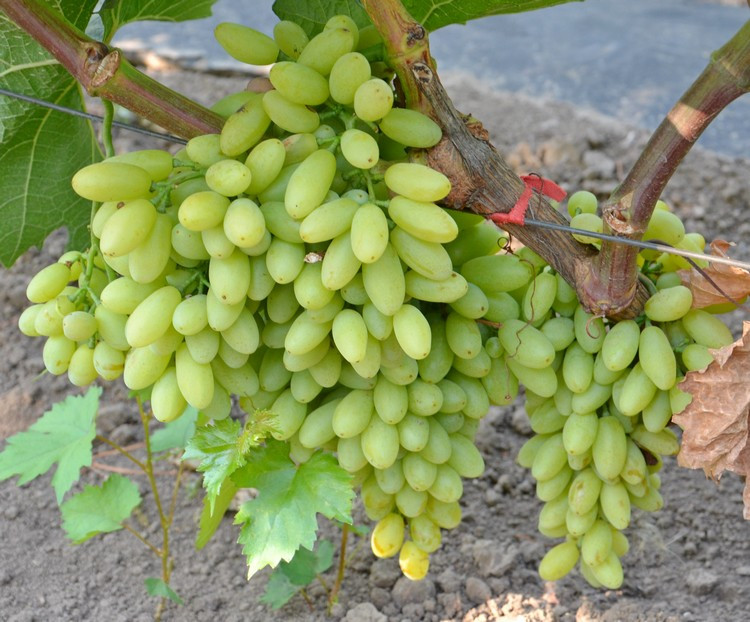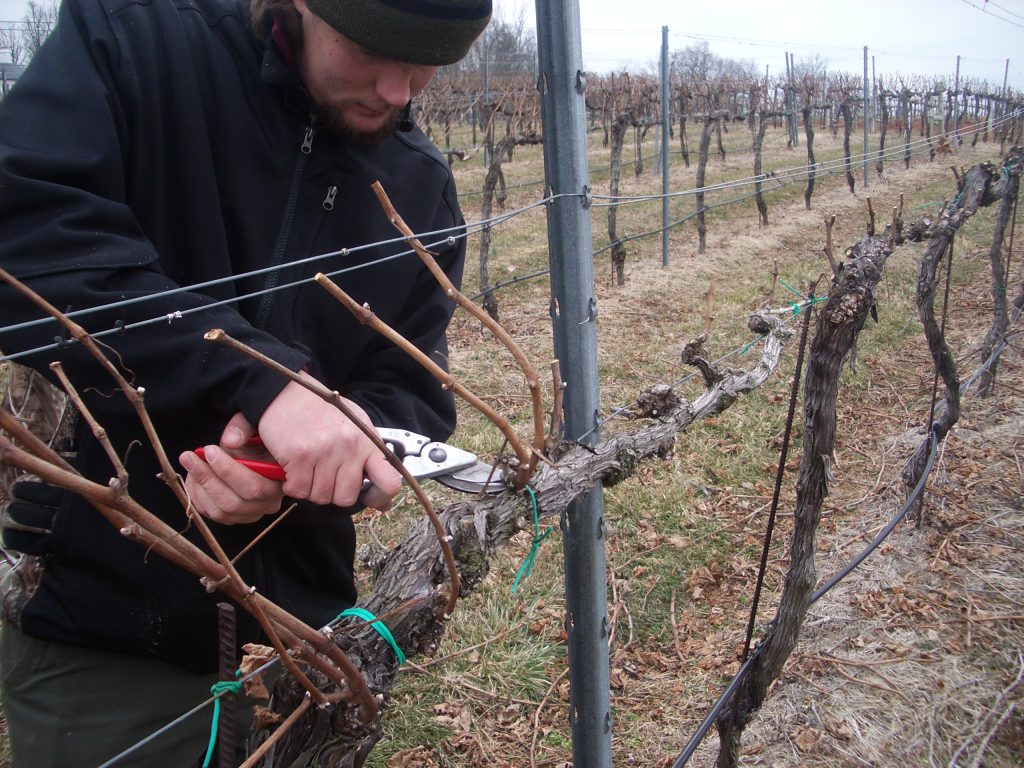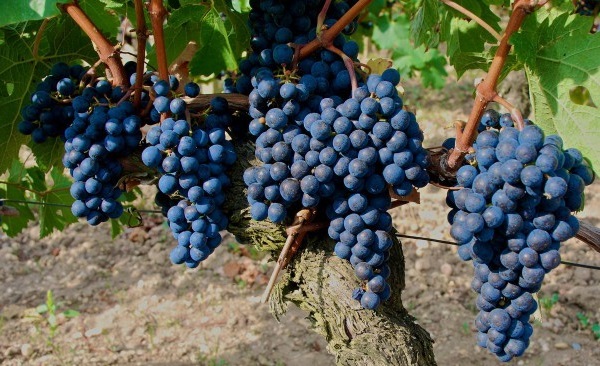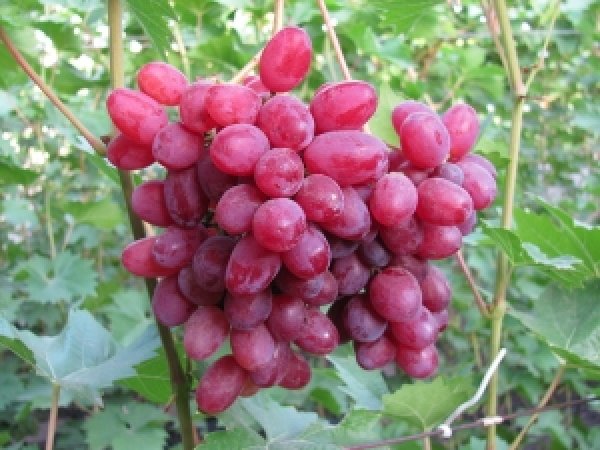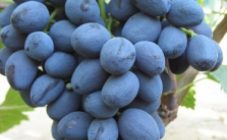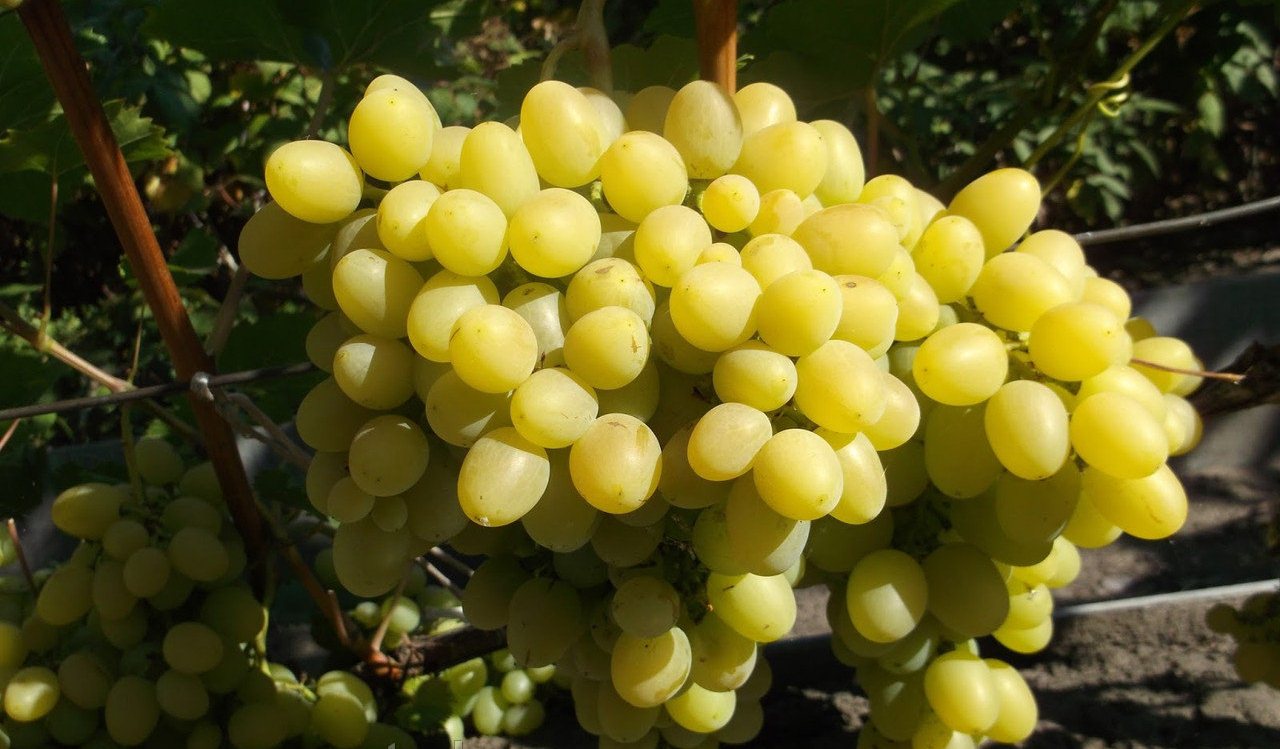Content:
Kishmish grape (vinograd kichmich) is interesting in itself, because its berries are completely seedless. For example, if a grower needs to breed a variety, he acquires or grows the seedlings himself using cuttings of the desired variety. But breeders do it differently.
If you need to get a completely new variety, then you need to plant the seeds first. The bred seedling will also have maternal qualities of the variety whose pollen was used for pollination. And if there are no bones - what to do? In fact, the fruit always contains the rudiments of seeds, the so-called rudiments. But viticulture has stepped further. To obtain seedless varieties, a special gene is introduced that interrupts the growth of seeds in berries.
Description of the best varieties of raisins
Radiant
Grapes of excellent taste, giving high yields. Berries ranging in size from 17 to 25 mm and weighing 2.5–4 g, large, elongated, bright pink. The pulp is dense with a nutmeg flavor. The bunches are large and reach 40 cm and weigh up to 1 kg. Stored and transported well. The advantages of this variety are early ripening, high yield. Unfortunately, due to the large size of the bunch, a lot of branches break.
The variety needs additional supports. It tolerates frosts down to -23 ° С.
Kishmish # 342 or Hungarian
A popular hybrid variety with early ripening periods - from 110 to 115 days. Berries are completely seedless, greenish, medium. The pulp is sweet and juicy. The bunches are medium in size, up to 500 g. The variety is very resistant to fungal diseases. Withstands frosts down to -26 ° С. The yield is good. Suitable for desserts and raisins. Pruning is important to avoid overloading the vine. Leave no more than 1 or 2 brushes.
Kishmish Zaporozhye
Early, 110 to 120 days. Bunches are conical, large, reach 900 g. Berries are from 2 to 2.5 g, oval, red-violet. The raisin grape variety is very harvestable. Resistant to disease and tolerates disease well. It is required to put supports and normalize the number of bunches.
Kishmish Mirage (Rusbol)
The cultivar matures at 115 or 125 days. Berries are oval, green, tasty, white. A bunch of large, conical shape, weighing up to 1 kg. Good rooting of cuttings. It tolerates frosts down to -25 ° С. Disease resistance is average. The variety may contain a small amount of seeds.
Autumn royal
Belongs to one of the largest varieties. One berry gains weight from 8 to 10 g. The brushes are heavy, up to 750 g, with oval black berries. Resistance to fungal diseases is good. Frost resistance up to -25 ° С. High productivity. Good survival rate of cuttings. There is some similarity with the grape variety of Nadezhda AZOS.
Armenian Kishmish
Ripening period - the end of August. Vigorous shoots, fruitful, unpretentious variety. Large and beautiful bunches with pink berries, excellent taste.
The raisins are rich in content:
- calories;
- dietary fiber;
- gland;
- potassium;
- copper.
Non-covering varieties for the Moscow region
The peculiarity of such varieties is that they do not need to be covered with the onset of cold weather, they have increased winter hardiness, which is important in the conditions of the Moscow region, with its frosty winters and autumn frosts.
- Jupiter – withstands frosts down to –27 ° С. Delicious and sweet. Berries up to 5 g, blue-red.
- Kishmish number 342 – fruitful, medium-sized green clusters. Frost resistance up to –26 ° С.
- Cocktail – frost resistance up to -25 ° С, amber berries, up to 3.5 g.
- Korinka Russian— withstands up to –26 ° С. The weight of the bunch is from 102 g, golden brown and berries up to 5 g.
- New – can withstand frosts down to –30 ° С. Berries are oval, dark blue, up to 5 g. Very good taste.
Landing features
To grow raisins or quiches mish grapes should be on a warm, sheltered from the winds, sunny side. The future vineyard can be planted both in spring and in autumn. In the spring they are planted, starting from the third decade of April and until the third decade of May, seedlings of the same year are planted.
In autumn, planting begins from October until the first frost. It is necessary to be especially careful about planting before winter. The planted seedling should be covered with a 1.5-liter bottle with three pre-drilled holes. And water well - at least three or four buckets.
Care
Kishmish needs protection from pests and diseases, including fungal ones. For spring and autumn treatments, copper sulfate or Bordeaux liquid is used. In the summer period - complex fertilizers: Strobi, Ridomil gold. If a spider mite appears on the leaves, you can spray them with infusions of tomato or potato tops. Or a prepared solution of 1 tsp. ammonia and a liter of water.
When pruning, mainly 8 to 12 eyes are left on the vine. Excess, weak shoots must be removed. To normalize the required load on each shoot, you need to leave 1 or 2 large brushes, the rest must be removed.
Fertilization
At the very beginning of spring, grapes need to be fed with nitrogen and organic fertilizers. During the flowering period, you can use the fertilizer "Ovyaz" for spraying. Since July, nitrogen fertilization is stopped. Now grapes need potash and phosphorus fertilizers.
Watering
The grapes need regular and moderate watering. For black soil, you need up to 6 buckets of water, and for sandy soils - at least 9 buckets. In hot periods, you need to water every 4 days, approximately 2 or 3 buckets under each bush.
Before harvesting, about two weeks, the amount of water for irrigation must be significantly reduced in order to keep the berries from cracking. You just need to do a little irrigation. Grapes respond positively to drip irrigation.
Kishmish is an amazing variety that is loved and appreciated by both adults and, of course, children. And a wide variety of varieties, their yield, unpretentiousness and the ability to grow even in especially cold regions of Russia, allows you to choose the most optimal and vending variety for your site.
